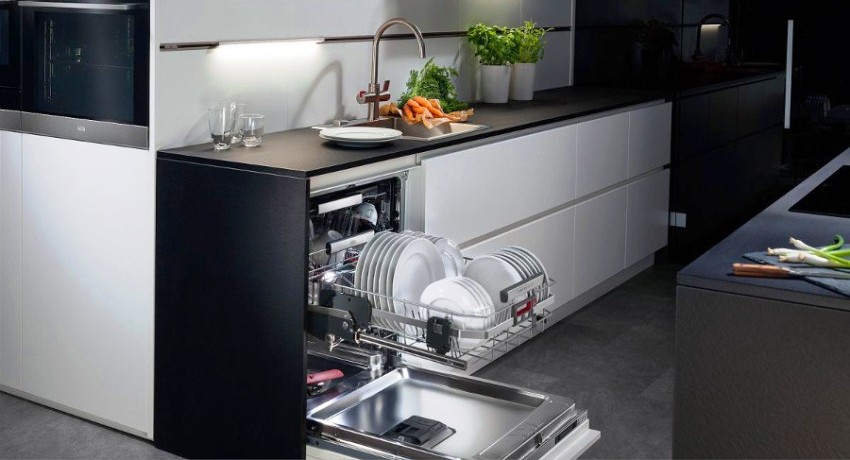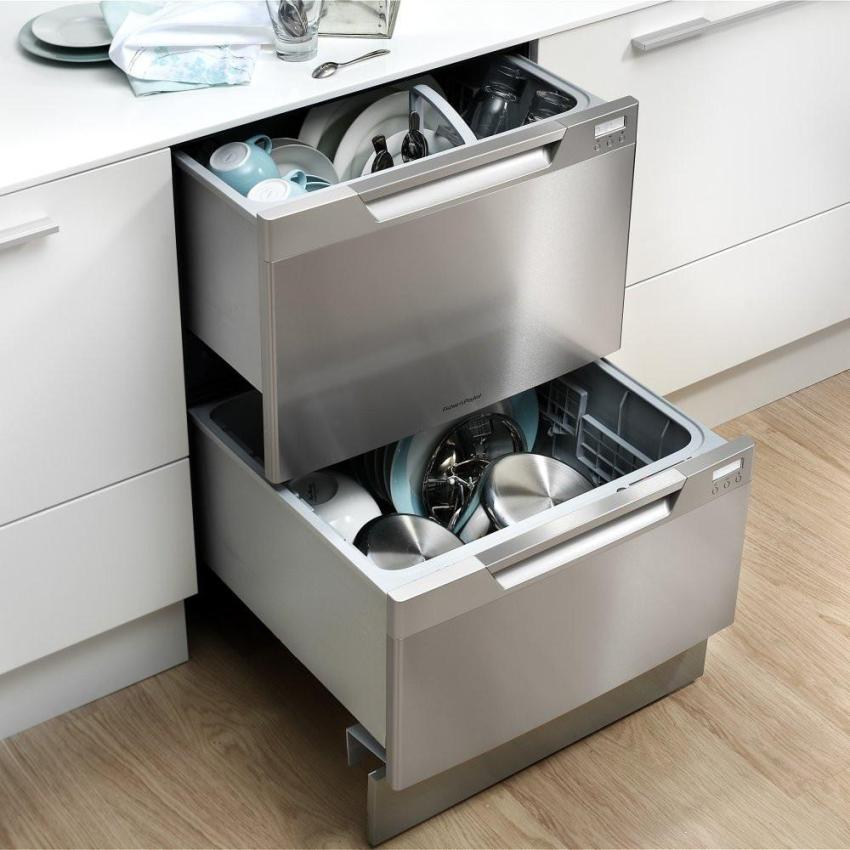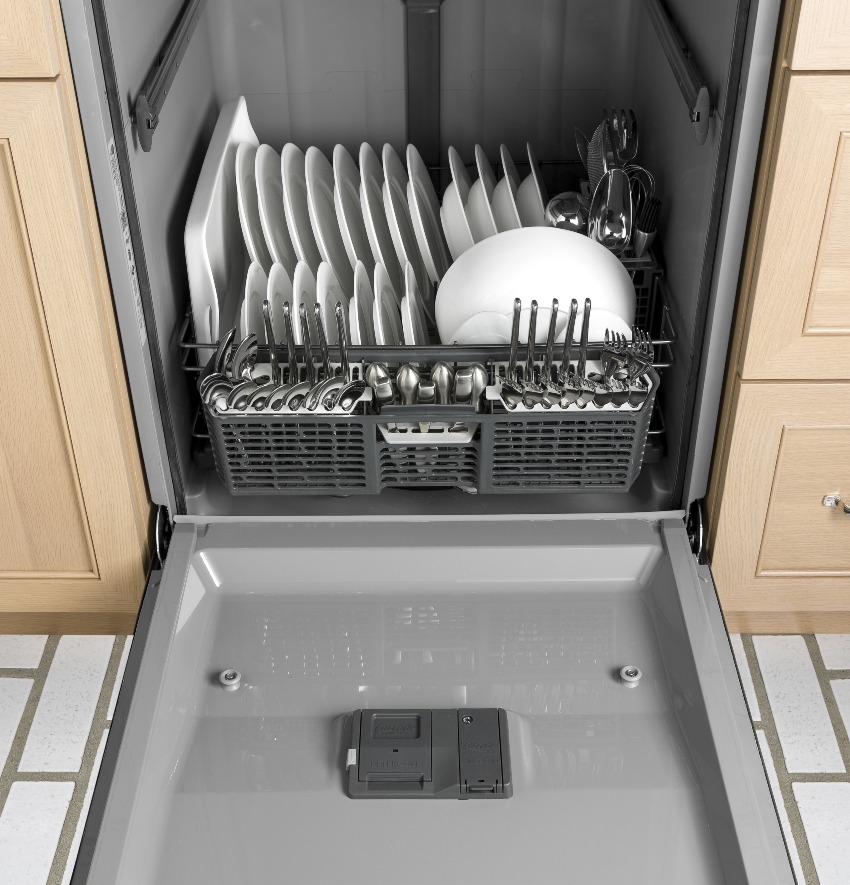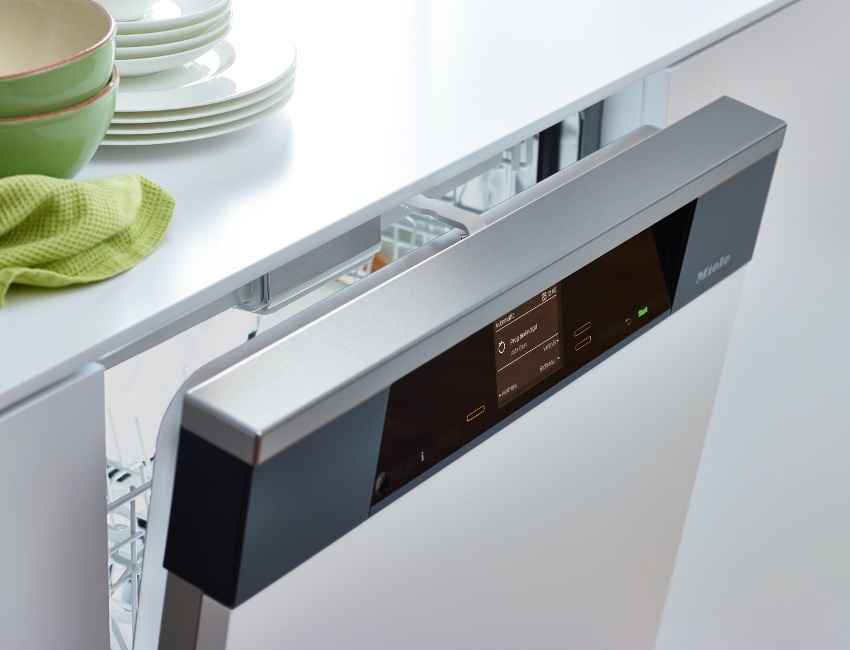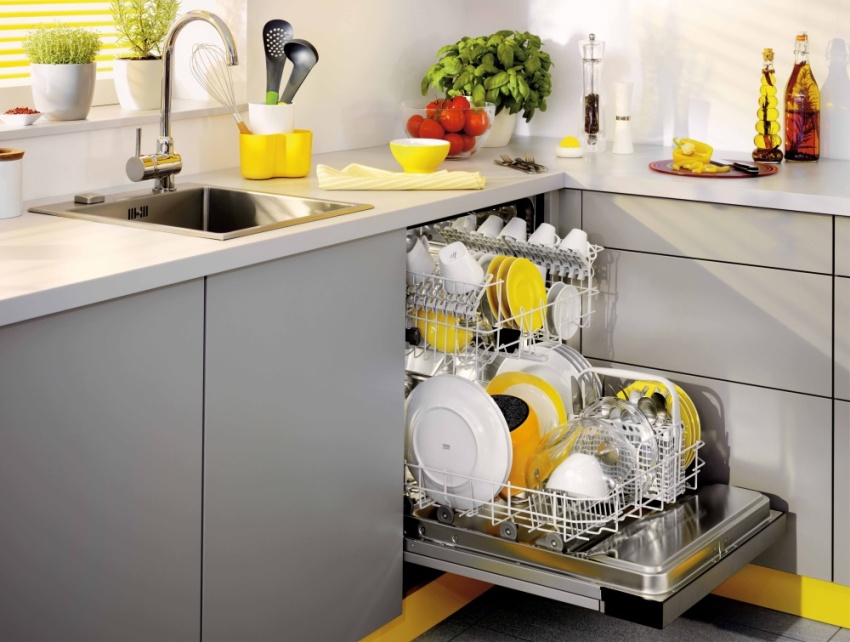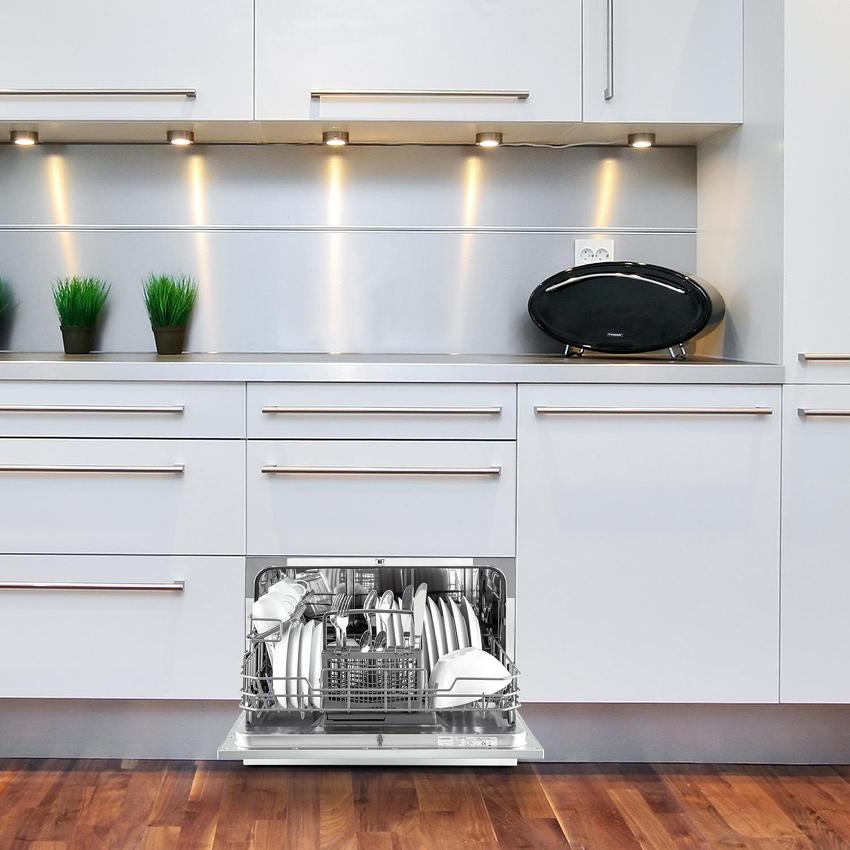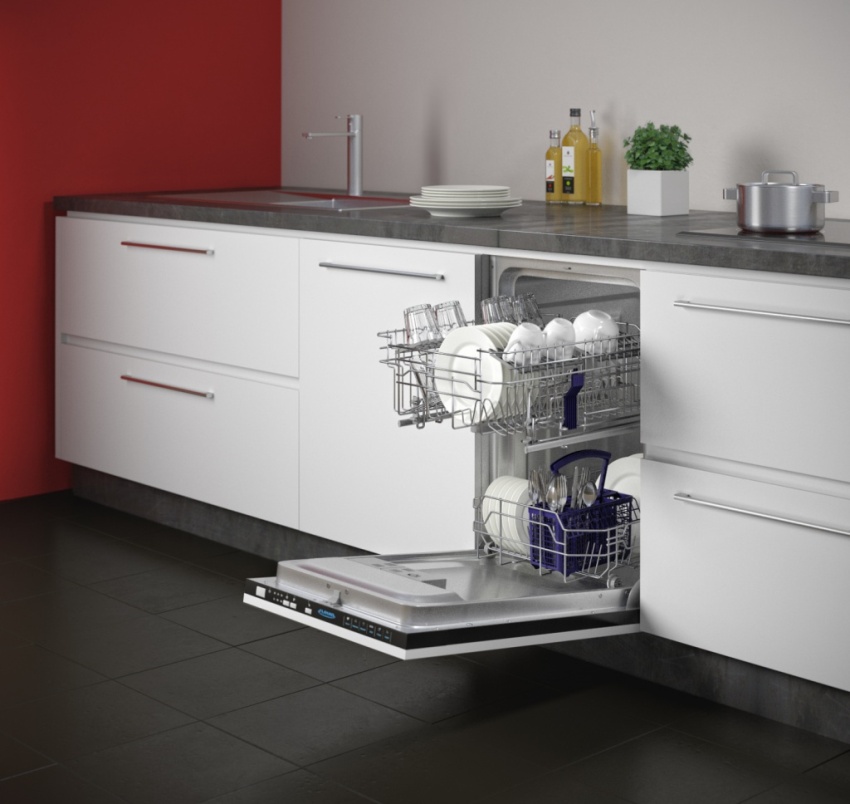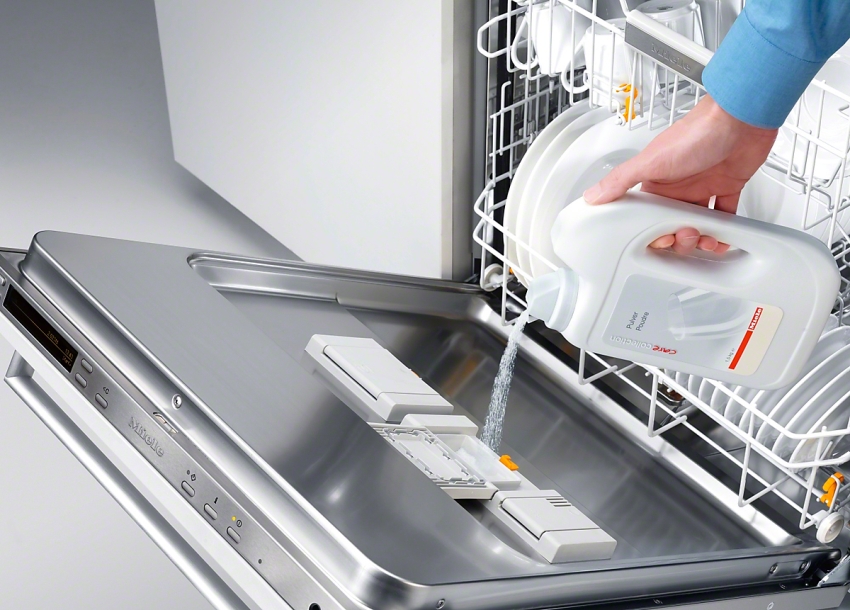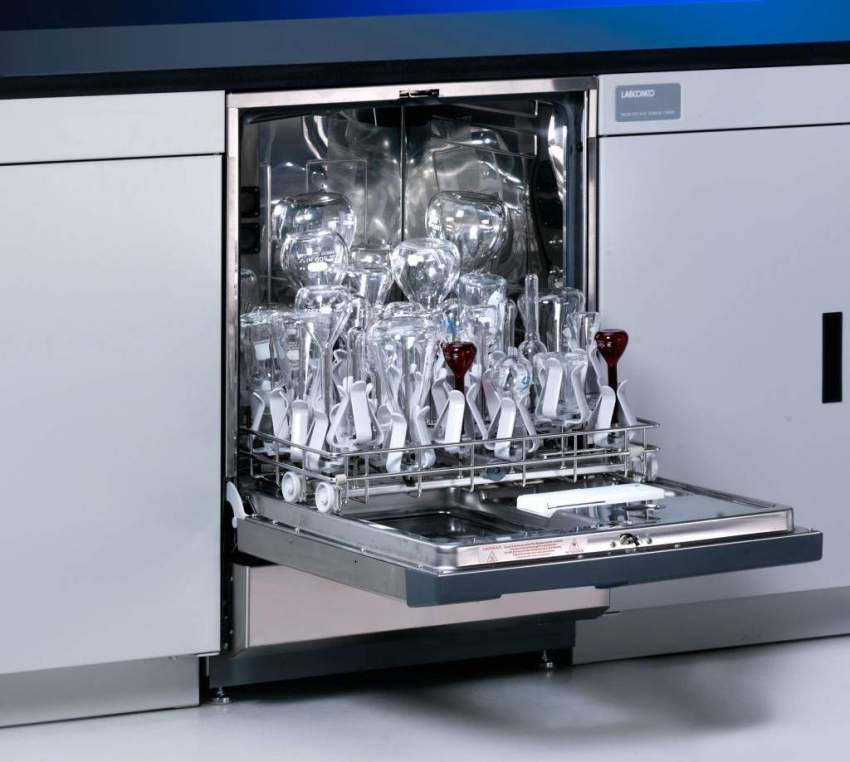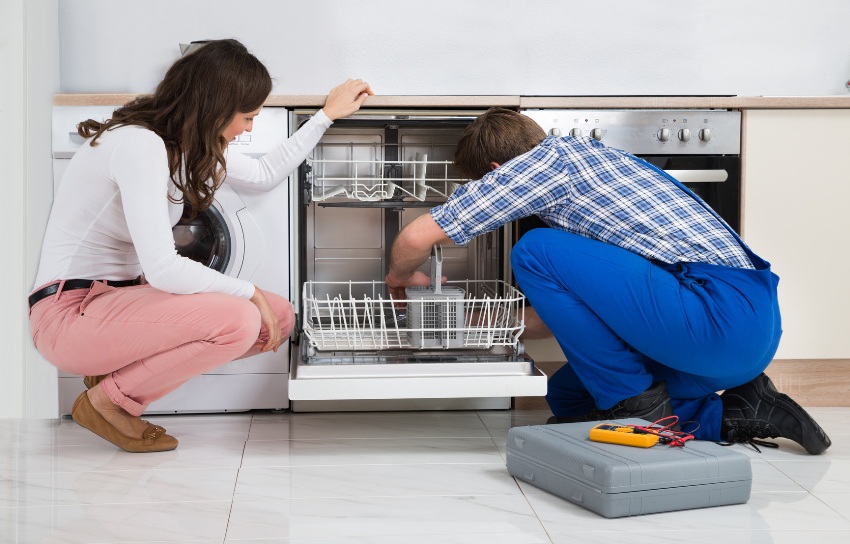The dishwasher is no longer a luxury item as it was a few years ago. Some people only pay attention to the price when choosing this device. This is a fundamentally wrong approach, since before buying a dishwasher, it is necessary to take into account not only its cost, but also the dimensions of the kitchen, the availability of furniture, the number of tenants, etc. This article will consider the question of how to choose a dishwasher correctly.
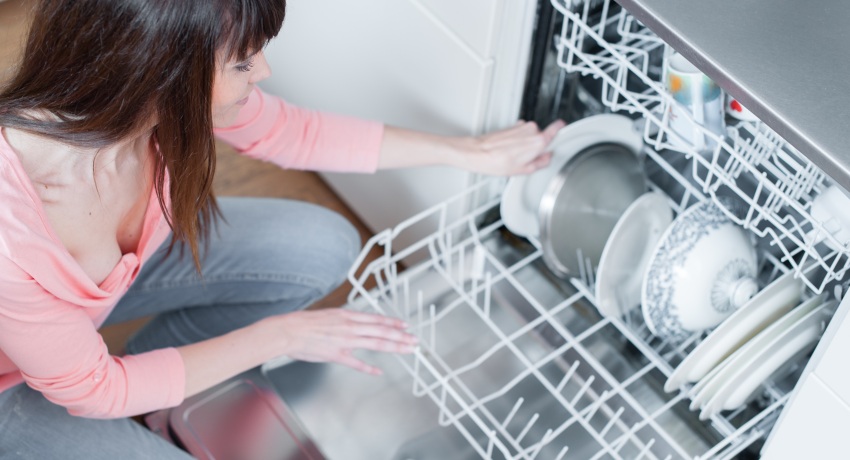
The dishwasher (PMM) is good because, firstly, it saves time and effort, and secondly, it washes and dries dishes perfectly
Content [Hide]
- 1 Advantages and disadvantages of a dishwasher for home use
- 2 How the dishwasher works: washing steps
- 3 Features of the built-in dishwasher
- 4 Which dishwasher to choose: control panel
- 4.1 Which dishwasher to buy: functionality
- 4.2 How to choose a dishwasher by size: recommendations
- 4.3 How to choose the right dishwasher: cost effective
- 4.4 How to choose a dishwasher for your home: water hardness
- 4.5 How to choose a dishwasher: type of drying
- 4.6 Which dishwasher to buy: auxiliary functions
- 5 How much does a dishwasher cost: price overview
- 6 Choosing a dishwasher detergent
- 7 Do-it-yourself dishwasher repair at home
Advantages and disadvantages of a dishwasher for home use
The dishwasher is distinguished by its efficiency as well as economy. This is a practical and reliable device that allows you to automate the process of washing dirty dishes. The dishwasher, like any other appliance, has positive and negative sides.
First of all, the quality of washing should be attributed to the advantages of this device. Using a dishwasher allows you to remove any plaque from plates and other dishes, which is quite problematic to do by hand. The difference between manual and automatic cleaning is especially noticeable when washing white ceramic products.
The advantage of choosing a dishwasher is that it is economical compared to manual dishwashing. For example, to carry out one cleaning cycle, this type of device usually uses an amount of water that would be enough for only one large pot when washing by hand.
The use of such a unit can save not only finances, but also time. A person is only required to enter the necessary data on the control panel and load dirty dishes into the device container.
The advantages of this unit also include high hygiene.The inner surface of the dishwasher is made, in most cases, of stainless steel, which does not emit active chemical compounds in contact with water. Tightness when washing dirty dishes excludes the ingress of foreign particles into the unit container.

The undoubted advantage of the dishwasher is that it can work on its own, without the need for human presence.
Another plus of these devices, without a doubt, is the acceptable cost. All car firms produce both expensive models equipped with additional functions and budget units. Thus, each person can choose a device that suits his financial capabilities.
However, dishwashers also have some disadvantages that must be considered before purchasing it. For example, its installation requires a fairly significant amount of space (as in the case of a washing machine). It is rather difficult to install such a device in small kitchens. Experts recommend installing dishwashers next to sinks, as this is the most practical solution.
Helpful information! For a small kitchen, a narrow dishwasher is best. The width of such a device is 45 cm.
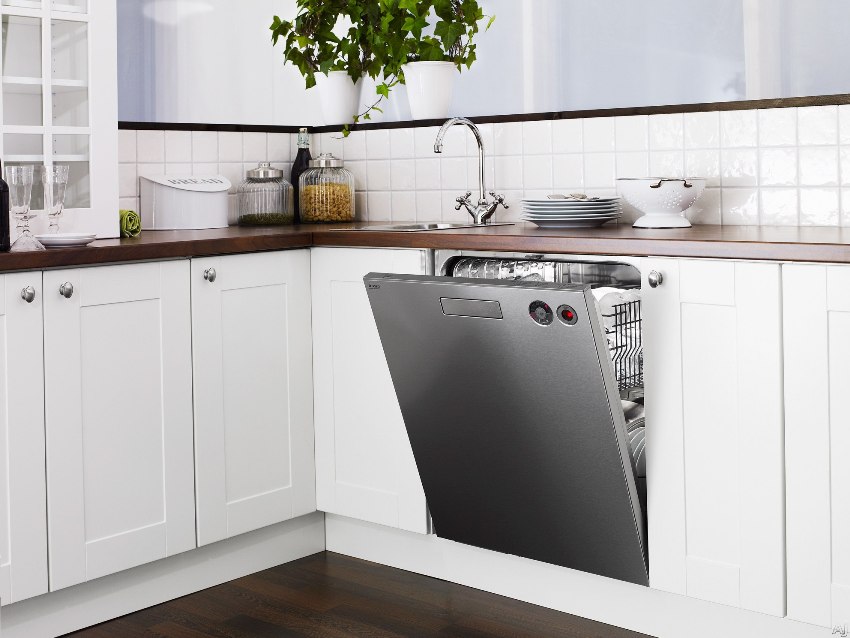
Dishwasher can be turned on even at night, since almost any model does not emit any sounds during operation
For normal operation of the PMM, you will need special detergents. Today on sale you can find universal remedies called 3 in 1 tablets. If desired, you can purchase powder, conditioner and salt separately. The cost of tablets is higher, but they are more convenient to use.
How the dishwasher works: washing steps
Before buying PMM, experts advise you to familiarize yourself with the principle of its operation. The cycle of washing dirty dishes from start to finish is divided into 7 stages. Let's consider them in more detail. First, you need to load the dirty dishes into the machine, after which you need to pour the detergent into a special tank.
Next, the washing parameters are set on the control panel and the button is turned on, which starts the cleaning cycle. Water passes through a softening filter and enters the PMM tank.
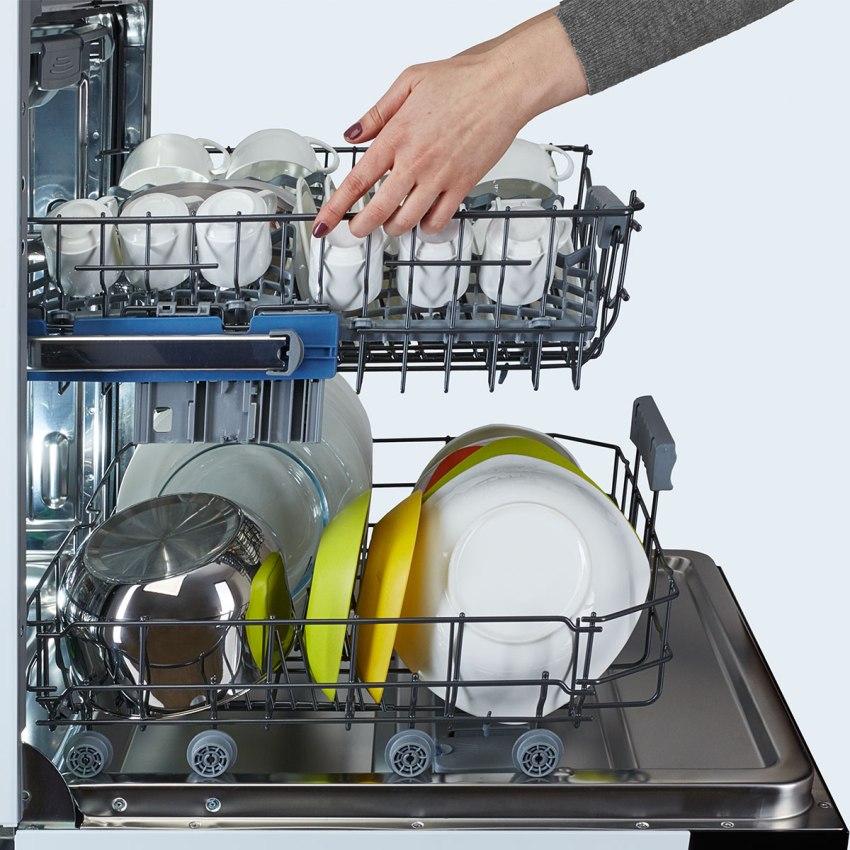
The washing of dishes in the machine is carried out by jets of water escaping at high speed from the rotating rocker arms
In the next step, electric heaters integrated into the design of the dishwasher heat it up. It should be noted that electric heaters in PMM are subdivided into two types: tubular (TEN) and flow-through. The first ones are located at the bottom of the container. In turn, the flow ones are located outside the chamber and contribute to the supply of already heated liquid to the tank with dirty dishes. Power dishwashers may be different.
Detergent is added to the heated water. The circulation pump is switched on, the function of which is to supply water under pressure. It is sprayed from above and below inside the chamber. Water jets scrub the dirt from the surface of the kitchen utensils, after which it settles on the bottom of the container.
Then the water is drained from the tank filled with dishes. In this case, the liquid passes through a special filter and again enters the sprinklers. Thus, the cleaning cycle repeats until the program set on the control panel is executed.
The penultimate stage involves the drainage of water into the sewer system by means of a drain pump. After that, clean water is taken and the washed dishes are rinsed.
At the last stage, the water is drained from the dishwasher, the cleaned dishes are dried inside the container. There are several types of drying. This is the standard process for washing dirty kitchen utensils.On the Internet, you can find more detailed diagrams explaining how the dishwasher works. Videos on this topic can also be easily found on the net.
All dishwashers are classified by installation type. Depending on this indicator, there are 3 main types of these units. Before buying a PMM, you need to choose which of the devices suits you best.
Features of the built-in dishwasher
First of all, you need to pay attention to the built-in PMM models. This type of dishwasher is the most compact and differs in that it fits completely in a kitchen set. The installation of such a unit involves hanging the facade on the front panel. In turn, the control panel is located on the front side of the door.
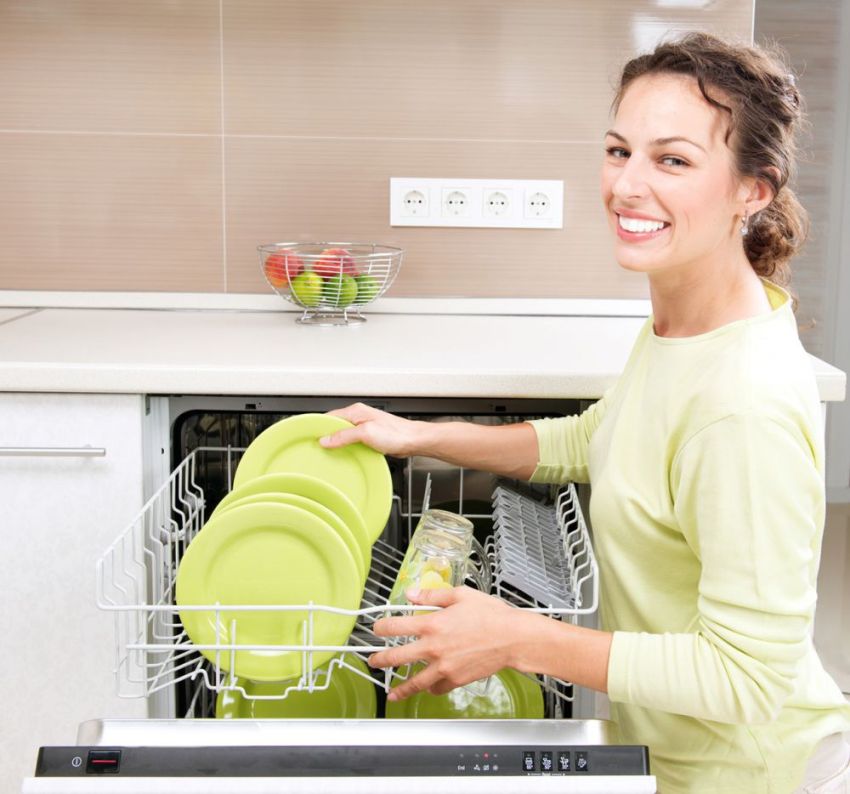
The built-in version of the dishwasher is the most preferable, since it allows you not to disturb the uniformity of the kitchen surfaces
Helpful information! Experts recommend this type of PMM for installation in a small kitchen. These models allow you to save the maximum amount of usable room space. And also they most organically fit into the overall interior.
Another advantage of these models is the low noise level during operation (due to integration into furniture). How to choose an integrated dishwasher? When choosing an integrated PMM, you need to pay attention to 3 factors:
- the size;
- energy saving class;
- number of people in the family.
Among the disadvantages of built-in PMMs, one can note their cost, as well as the absence of a solid body. The second factor excludes the possibility of rearrangement to another place of the built-in dishwasher. Reviews about these devices will help you determine the advisability of purchasing such a PMM.
Partially built-in stationary dishwashers
This type of device is partially integrated into the kitchen furniture (without a facade). PMM of this type can be located in any suitable place and rearranged if necessary. As for the colors of the front panels of the units, most often you can find the traditional white version on sale.
The main advantage of a freestanding dishwasher is ease of use. This is due to the location of the control panel, which is not at the end, but on the door. Therefore, to launch such a PMM, you do not need to open it. The freestanding model is ideal when you are not going to order an individual headset for household appliances and just want install dishwasher under the countertop.
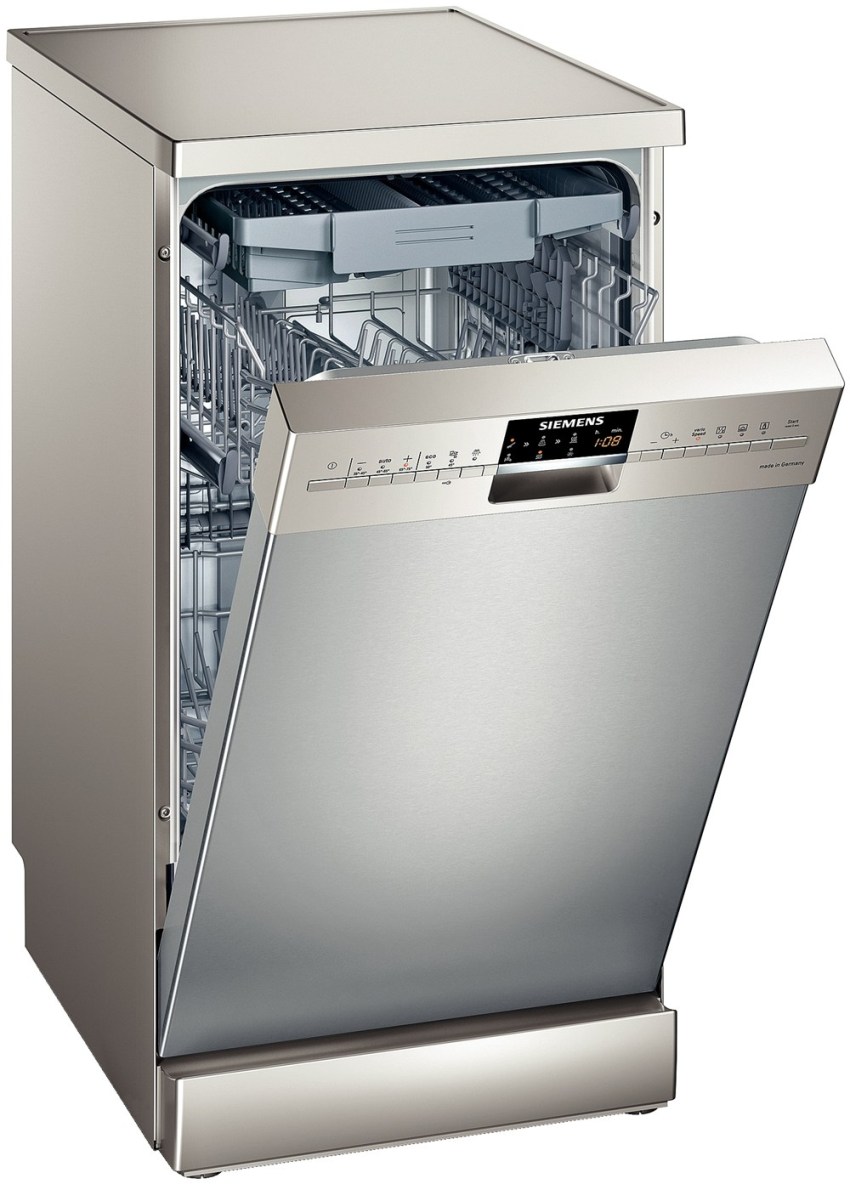
A partially built-in dishwasher is characterized by the fact that the control panel is located on the door in a vertical plane, facing the user
Freestanding devices, although they stand out in the interior of the kitchen, however, when properly located, look quite organic. The cost of such units is lower than the price of built-in appliances, which is why they are very popular among buyers.
Tabletop dishwasher: features
Such models are used only in cases where there is not enough space in the kitchen to install a full-fledged type of PMM. The dimensions of this device are comparable to a microwave oven, which allows you to install portable models even in a tight kitchen.
Note! If necessary, you can partially integrate this device into a furniture set (like a microwave oven). This option is most appropriate.
Such samples are among the cheapest dishwashers, however, due to their size, they have a small capacity. The maximum number of sets of dishes that can be placed in it is 6, and for some devices this figure is only 4.

The tabletop dishwasher is compact, it fits on a kitchen set, because of this, the price is much lower than stationary
The tabletop PMM is connected to a tap and is an ideal option for apartments with 1-2 people. The advantages of these devices include a wide range of models, low cost, and mobility. However, a portable dishwasher is more difficult to fit into a kitchen interior.
Related article:
Built-in kitchen appliances: tips for choosing and an overview of popular devices
Hoods, ovens, hobs, refrigerators and other devices. Councils for the choice of built-in technology. Review of popular models.
TOWhich dishwasher to choose: Control Panel
The type of PMM control panel is an important characteristic that you need to pay attention to before buying a dishwasher. The device control option determines the convenience of its operation. Today there are 2 types of control panels:
- mechanical;
- sensory.
In the first case, the panel includes buttons through which the operation of the dishwasher is controlled. An overview of the advantages of such a unit comes down to two positions: low cost and ease of repair (in case of failure). Traditionally, the mechanical panel is located on the front of the dishwasher. In some cases, it is located at the end of the door.
In turn, PMM equipped with electronic panels are more presentable and modern. It is much more convenient to manage them, but the cost of such dishwashers is higher. The buttons on the touch panel are most often backlit, which makes it possible to use the PMM without the light on.
Which dishwasher to buy: functionality
The dishwasher can have a different set of functions. It depends on the PMM company and the cost of the model. In modern devices, the number of modes ranges from 4 to 20. For home use, experts advise choosing machines equipped with a minimum set of modes, since this is quite enough. Let's consider the most common functions of the PMM:
- standard mode;
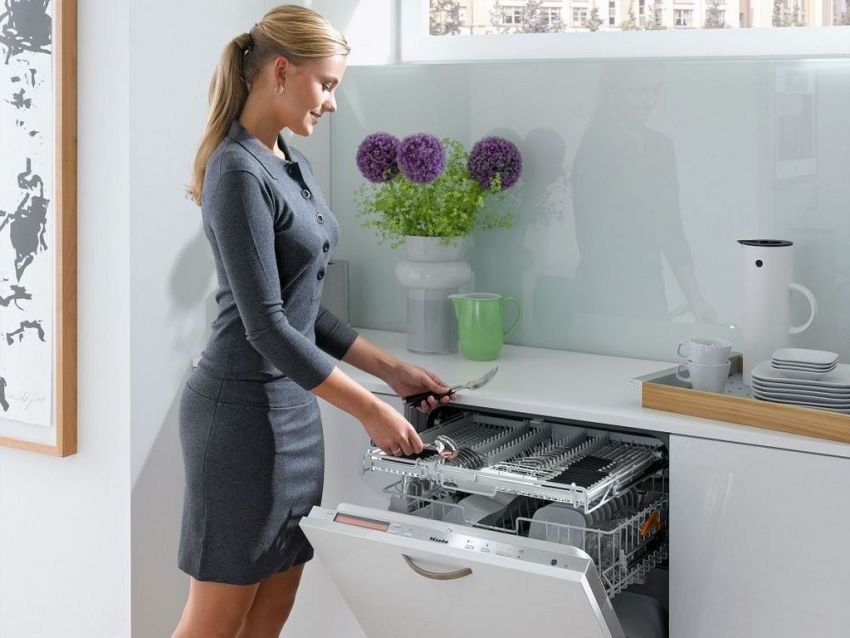
There is a package of both standard programs ("normal", "express" "intensive"), and special programs, for example, an economical program for light pollution
- rinsing;
- express wash;
- intensive mode.
Standard mode. The function is the most common and is used for daily washing of dirty dishes. The temperature value for standard cleaning in PMM ranges from +50 to +60 ° С. However, in order to answer the question of which dishwasher is better, you need to familiarize yourself with all the important options.
Rinsing (soaking). This mode is used for cleaning very dirty dishes. And also rinsing is suitable for washing plates loaded into the PMM several hours before the operation itself.
Express car wash. A useful feature that belongs to the standard set of programs. Express wash is used to clean not very dirty dishes. The wash cycle is in this case shorter.
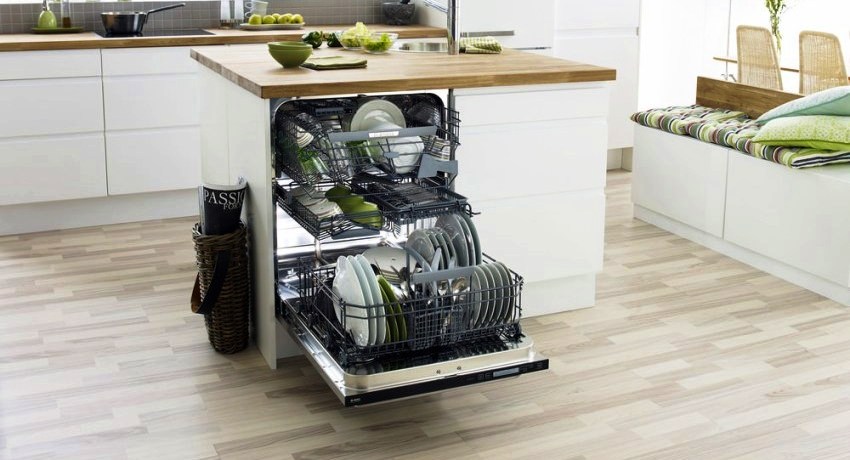
Before you buy a dishwasher, you should consider not only its dimensions and placement, but also the number of necessary functions.
Intensive mode. From the name it is clear that this purpose is used for enhanced cleaning of dishes. This function allows you to wash very dirty dishes and trays. Such cleaning involves several cycles. Among them are soaking and additional washing with hot water (approximately + 75 ° C).
Note! Expensive types of dishwashers are able to independently regulate the dishwashing process. This applies not only to the automatic selection of temperature, but also to the cycle duration.
The standard PMM modes are used for washing traditional dishes. They are not suitable for cleaning crystal glasses, porcelain cups and plastic items. Consider the modes that are used to clean dishes made of non-standard materials:
- delicate;
- steam treatment;
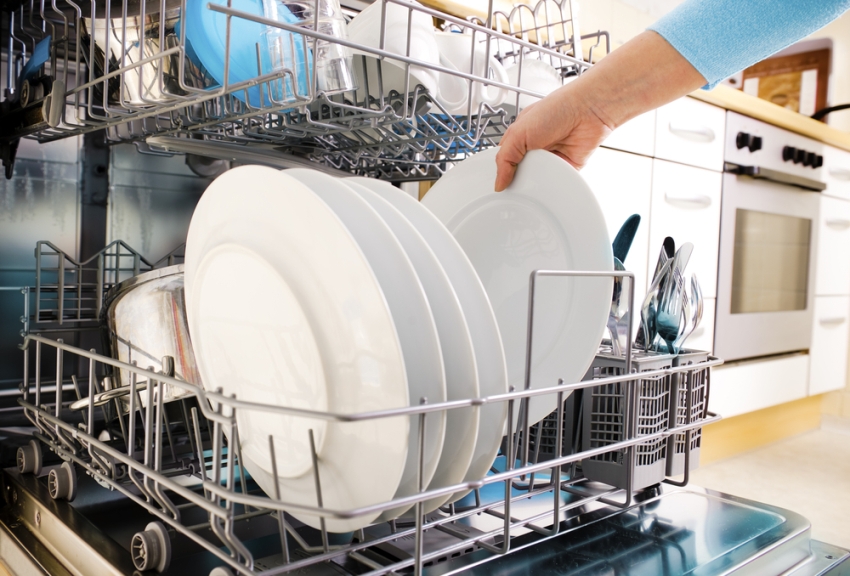
Among the functionality of modern dishwashers, you can find other useful functions that will come in handy on the farm.
- for plastic.
Experts recommend purchasing dishwashers for additional savings in water consumption, which have the function of washing a certain amount of dishes. In this case, you do not have to wait until the PMM chamber is filled with the required number of plates and cups.
When choosing this device, it is recommended to visit the appropriate feedback forum. The dishwasher can greatly simplify the life of the owners of the apartment, but its choice must be approached rationally and reasonably.
How to choose a dishwasher by size: recommendations
The size of the dishwasher is the main criterion that should be considered before purchasing it. This indicator determines the number of dishes that can be washed in it at a time, as well as the area that the PMM will occupy in the kitchen. Consider the types of dishwashers in size:
- full-size;
- narrow;
- compact.
Full-size. The dimensions of such units are ideal for standard kitchen furniture and are 60x60x80 cm.In some cases, the last value (device height) can be larger - up to 85 cm.Most often, full-size PMMs include several sections for dishes, the height of which can be changed at will. It is recommended to study the reviews before purchasing the unit. Which dishwasher to choose is a common question that requires a serious approach.
Narrow. The height and depth of such dishwashers fully correspond to the dimensions of the previous type. However, the width of the narrow models is only 45 cm. Such devices are less spacious and, depending on the model, can wash up to 13 sets of dishes at a time. Today you can meet many people searching the Internet for an answer to the question of how to choose a 45 cm built-in dishwasher.Devices with such dimensions are becoming more and more popular every day.
Compact. The smallest dishwashers that belong to the desktop category. The dimensions of compact PMMs differ depending on their model, however, the standard dimensions are 45x55x45 cm. At a time, such a machine can hold no more than 7 sets of tableware.
Note! Experts recommend purchasing devices with a small margin of capacity (2-3 sets). This is due to the fact that in 1 day in an average family of 3-4 people, up to 12 sets of kitchen utensils can accumulate.
It is important to note that a set of dishes is a standard set required for one person to eat. It includes from 6 to 8 items, including the following: plate, mug, cutlery, etc.
How to choose the right dishwasher: economy
Before buying PMM, it is recommended to pay attention to such a criterion as efficiency. The power of the unit depends on the energy class, which affects the electricity consumption. For example, units in class A consume the least amount of energy. The cost of such devices, as a rule, is higher, but the cost of purchasing such a PMM is fully paid off by its economy. Classes B and C are also classified as energy saving devices.
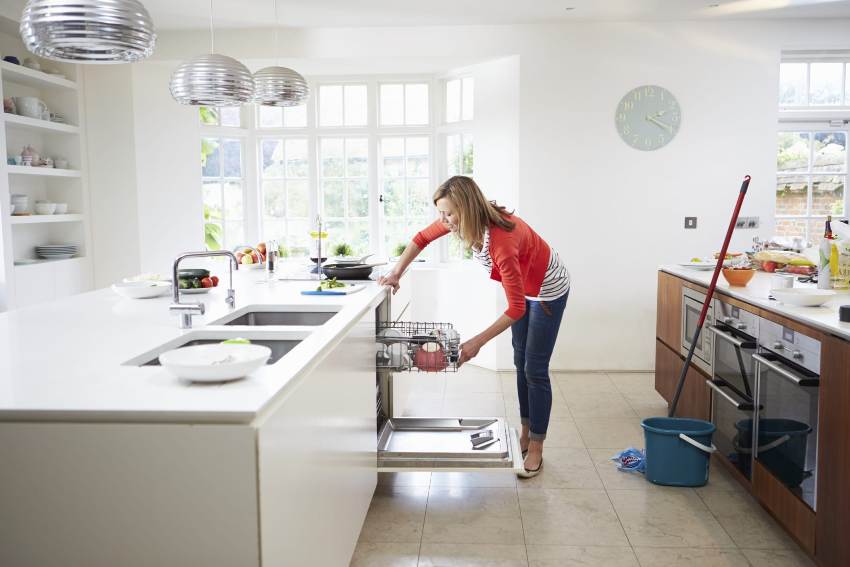
Manufacturers offer seven classes of energy consumption PMM, which are usually represented by Latin letters from A to G
In turn, classes D and E belong to the middle category and, of course, their energy efficiency corresponds to this class. The least economical are devices, the class of which is designated by the letters F and G. Before buying, it is also worth considering the level of water consumption in the dishwasher.
PMM is connected to two communications, namely: water supply and sewerage system. The dishes inside such a unit are washed using cold or hot water. In most cases, dishwashers function with cold water. But experts note that this type of operation is the least economical, since it requires a rather large consumption of electricity.
Depending on the water consumption, dishwashers are divided into 3 groups: highly economical, medium economical, and uneconomical. In the first case, about 14-16 liters of water are required for one wash cycle. Medium-efficient units consume 17-20 liters, and uneconomical ones - up to 26 liters.
How to choose a dishwasher for your home: hardness of water
Another important criterion that determines the efficiency of the future operation of the dishwasher is the presence of an ion exchanger. As a rule, devices that are equipped with it have a water hardness indicator. The ion exchanger purifies water saturated with metals. The process itself is as follows: the liquid passes through the resin filter and softens.
The presence of an ion exchanger prolongs the operational life of the PMM. Otherwise, plaque will form on its walls and other structural elements in contact with water. Hard water causes breakdown, which necessitates a call to a dishwasher repair technician.
The resin contained in the ion exchanger loses its useful qualities over time. To restore them, it is necessary to periodically add a salt with regenerating properties to the corresponding compartment of the PMM. The latest models have a program that independently determines the need to replenish the salt supply.
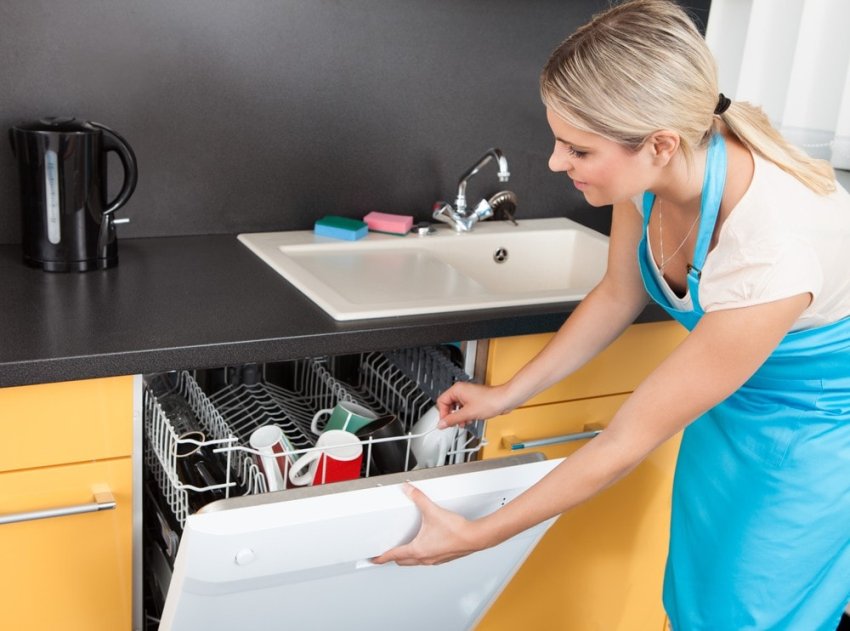
The dishwasher requires water with a certain hardness in order to work efficiently and for a long time.
Before buying a dishwasher, it is also recommended to ask if it has a rinse aid indicator. This liquid substance is required for efficient and effective cleaning of dirty dishes.
How to choose a dishwasher: drying type
The type of drying is a characteristic that determines how much energy the PMM will consume during operation, and this parameter also indicates the time required to carry out one cycle of washing dishes. Today, on the home appliance market, there are dishwashers with the following options for drying kitchen utensils:
- condensing;
- conventional;
- intense.
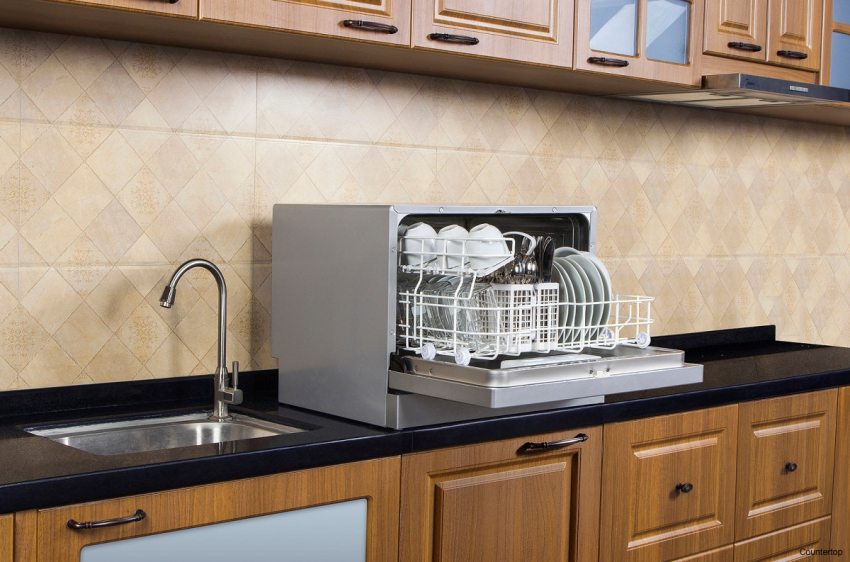
One of the main advantages in dishwashers is that the dishes do not need to be dried or dried with a towel.
Condensing. This is the most common option. From an economic point of view, the condensation type is the most acceptable and is built into standard dishwashers. Such drying is carried out as follows: during the rinsing phase, the cleaned dishes are exposed to a hot water jet, which subsequently evaporates and condenses in the form of drops on the walls of the tank. Thanks to this solution, the consumption of electrical energy is eliminated. However, the natural evaporation process can take quite a long time.
Note! Experts recommend taking into account the PMM noise level.The most suitable for private use are devices in which this indicator is in the range from 43 to 45 dB.
Convection. This option is also called turbo drying. In this case, the dishes dry out much faster due to the use of fans that distill the heated air in the tank. However, a turbo dryer consumes electricity, thus being quite costly. Therefore, it is recommended to think carefully in order to determine which dishwasher to choose for your home.
Intense. This drying option is usually built into new PMM models. In this case, the process is carried out by means of a temperature difference. For this, the walls of the container are cooled with the help of water, on which moisture subsequently condenses. In order to accelerate the process of moisture settling on the cooled walls, air ducts built in near the heat exchange elements are used. This arrangement creates a pressure difference within the chamber.
There are other ways of drying dishes inside the PMM, but they are experimental and are not used in mass production. The choice of this parameter must be made based on personal factors: the availability of free time and financial capabilities.
What buy dishwasher: secondary functions
Additional characteristics can be very useful in some cases. Equipping with auxiliary functions is an important criterion for choosing a PMM. However, you need to be clear about which ones are appropriate for your circumstances. Otherwise, you will simply spend more financial resources, and in return you will receive an unnecessary option. Let's take a look at the most common useful features.
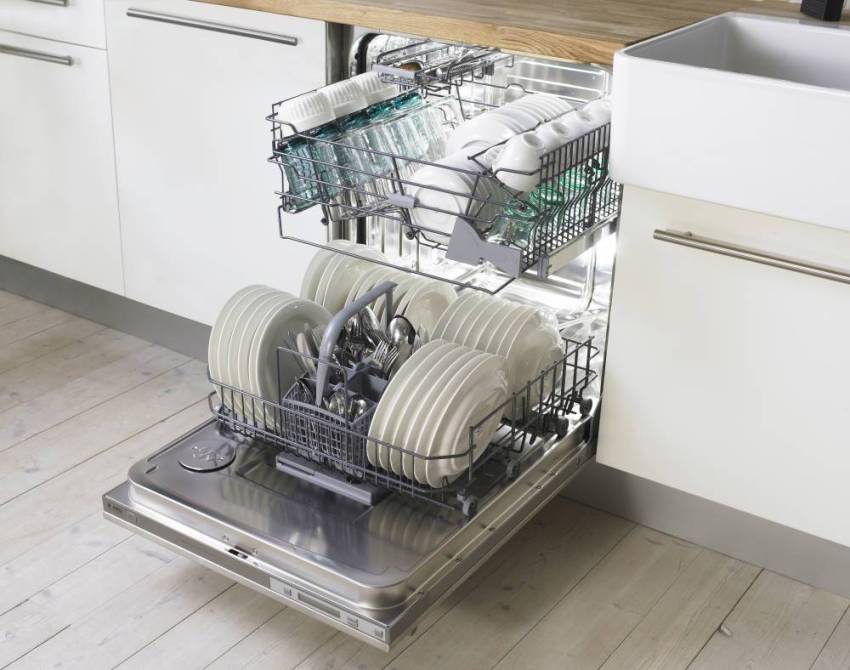
When choosing a dishwasher, it is advisable to know about the functions and programs that it is capable of performing, depending on the type, they can be very different from each other.
When choosing a dishwasher, some people do not pay attention to the connection type of this unit. The thing is that the overwhelming majority of modern PMMs are connected only to cold water supply. They heat the liquid using special elements integrated into them. This dishwasher option is quite costly, as it consumes electrical energy. So which dishwasher should you buy to save money? In this case, it is recommended to purchase a PMM that can be connected to hot water.
Another useful option is child protection. The noise generated by the PMM during operation often attracts young children. This could cause a child who is interested in this sound to accidentally open the dishwasher. This is especially dangerous if washing is done with hot water. For protection from children, some models are equipped with a special shutter mechanism (lock).
Helpful information! If desired, you can purchase a unit that is able to automatically determine the desired mode of washing dirty dishes. And also such devices are able to control the washing process and the consumption of chemicals. However, many people leave reviews indicating that this feature does not work very well.
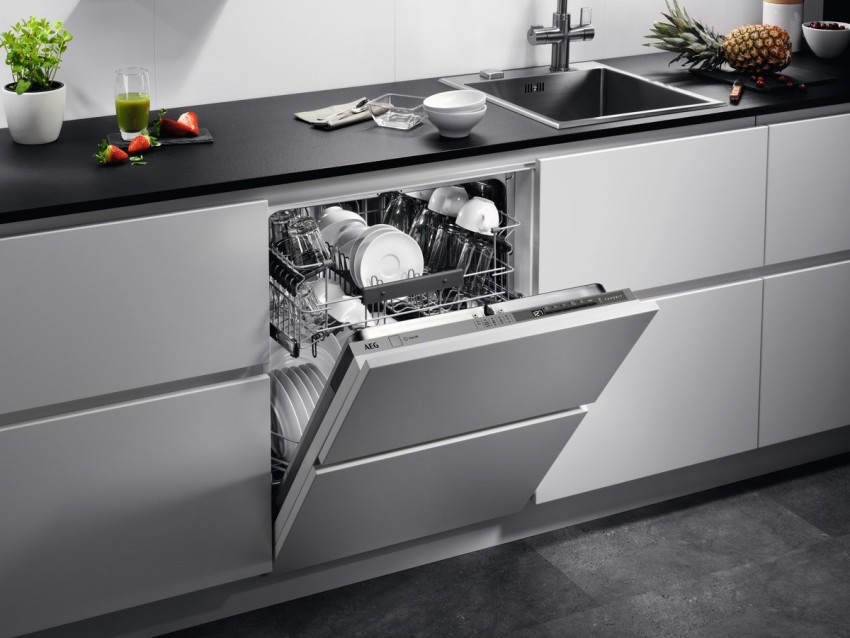
In addition to the basic modes, many dishwashers may have other auxiliary functions: delayed start, half load, clogging sensor
Other useful options include the following: self-cleaning of the filter from contamination, a start timer and additional sound insulation. The list of auxiliary functions does not end there, but the most popular ones are listed above.
How much does a dishwasher cost: price overview
A large (fully built-in) dishwasher may vary in price.This indicator depends on factors such as brand, model, dimensions, connection option and number of programs. Low-cost devices can be purchased for 15-25 thousand rubles. More expensive models are in the price range from 25 to 50 thousand rubles. The cost of the latest dishwashers, in which almost all functions are automated, can go up to 150 thousand rubles.
The price of a dishwasher 60 cm wide on average is 20-30 thousand rubles. Devices that belong to the group of partially built-in ones and have the same dimensions can be purchased for 25-110 thousand rubles. The least expensive are the desktop models. The minimum price for such a device is 11-12 thousand rubles. It is recommended to buy a portable model if you rarely eat at home.
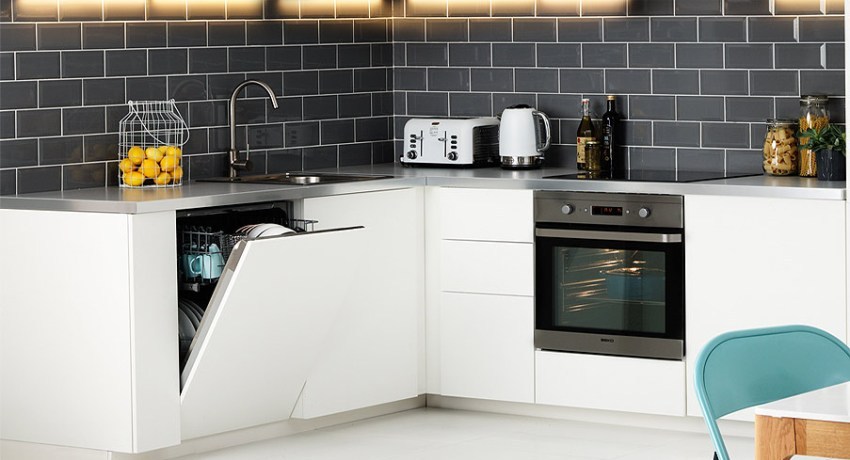
The more programs, modes and functions, the more extensive the capabilities of the dishwasher, but the higher its price
There is no definite answer to the question of how much a dishwasher costs. Therefore, before purchasing it, it is recommended to study the prices of goods of various brands. As a rule, domestic units are cheaper, but their quality is lower. The operating life of budget models may be shorter than that of more expensive equipment.
Choosing a dishwasher detergent
The correct detergent must be effective and at the same time not harmful to the dishwasher. Some formulations can reduce the operational life of PMM. All funds are divided into several types (depending on the composition and state of aggregation). Let's consider the most popular ones:
- powders;
- gels;
- pills;
- means 3 in 1.

There is a whole group of dishwasher detergents that are needed at different times, for different purposes and in different doses.
Pills. A popular detergent option that is easy to use. The tablets are suitable for modern PMM and contribute to effective cleaning of dishes. Of the disadvantages of such a tool, it can be noted that it cannot be used with short wash cycles. This is due to the fact that the tablet simply does not have time to dissolve in water.
Note! The choice of a tool depends on the type of PMM and the financial capabilities of the owners. Tablets, for example, are more expensive than powders. It's worth noting that the finest dishwasher tablets come from Finish, BioMio and Snowter.
Powders. A common type of detergent that is popular for its low cost. A significant disadvantage of this tool is that it is capable of leaving scratches on dishes. It should be said that this composition is not convenient, since it is easy to spill it past the desired reservoir. Powder consumption for 1 wash cycle is approximately 30 g.
Gels. For washing dishes in PMM, experts recommend choosing just such products. The advantages of gels include the absence of abrasives, the quality of cleaning, and the ability to dissolve quickly. In addition, this detergent can be used for dishes made of porcelain, and the gels do not oxidize silver cutlery.
3in1 funds. No less popular option than the previous ones. 3-in-1 products have a triple effect, as they have detergent, softening and rinsing properties. This is one of the most convenient and expensive products in the modern household chemicals market.
If necessary, you can make your own dishwasher tablets. However, it is better to use quality, certified products.
Dishwasher repair at home do it yourself
It often happens that the PMM begins to poorly cope with its direct responsibilities or even completely breaks down. In the first case, experts advise to carry out preventive cleaning of the machine.If it does not help, then you will have to fix the dishwasher.
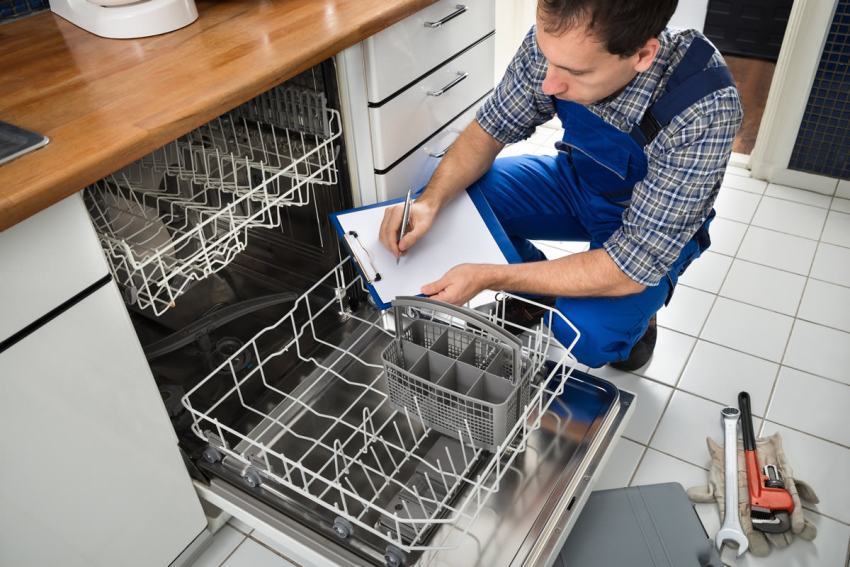
If the equipment has served for more than 5 years, then a possible cause of the malfunction may be trivial wear and tear of spare parts
The first step is to determine what exactly is faulty. To do this, you need to start the unit and find out at what stage it stops working. If the PMM stops performing the dishwashing cycle, then this means the failure of the structural element responsible for the corresponding stage (for example, rinsing or drying).
Every year, household appliances are becoming more and more complex from a technical point of view. Many PMMs are capable of conducting automatic diagnostics, which allows you to establish the cause of the breakdown. Fault identification is carried out by means of dishwasher error codes without disassembly. Consider several options for common breakdowns, as well as their causes:
- PMM does not collect water - valve breakage;
- the detergent does not wash out - tube clogging, valve malfunction or program failure;
- immobility of the rocker arm with nozzles - blockage, weak pressure;
- unprogrammed stop of washing - engine overload, software failure or blockages in filters;
- the machine cannot drain the water - a pump breakdown, blockages in filters or weak pressure in the sewer system.
Note! A more detailed list of possible malfunctions and their causes can be found in the instructions that are attached to the PMM.
If it was not possible to identify the cause of the breakdown, then you will need to disassemble the unit to repair the dishwasher with your own hands. To do this, you need to prepare a set of screwdrivers with different bits. First, you need to pull out the machine, which is under the table top, in order to provide access to all its surfaces.
Next, an external examination is carried out, which allows you to verify the integrity of the PMM cable. After removing the body, the structural elements responsible for the interrupted stage of the cycle are checked. After identifying a breakdown (for example, a burned-out circuit), it must be repaired. If you do not have the slightest skills in electronics, then it is recommended to visit specialized forums or use the services of a qualified master. It is advisable to contact specialists for the repair of industrial dishwashers.
The choice of a dishwasher is made taking into account financial capabilities, the size of the kitchen, as well as individual preferences. It is important to remember that this type of unit requires the use of special detergents and periodic checks. Preventive cleaning will extend the life of your dishwasher.
